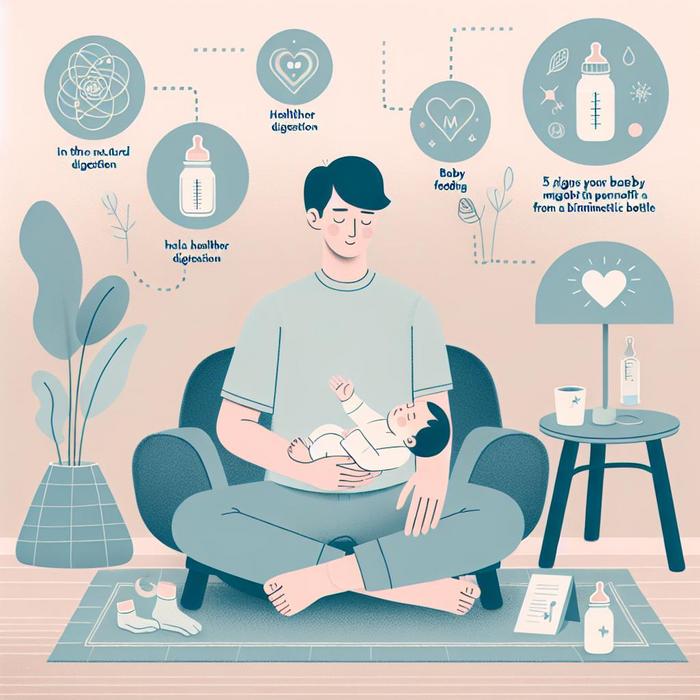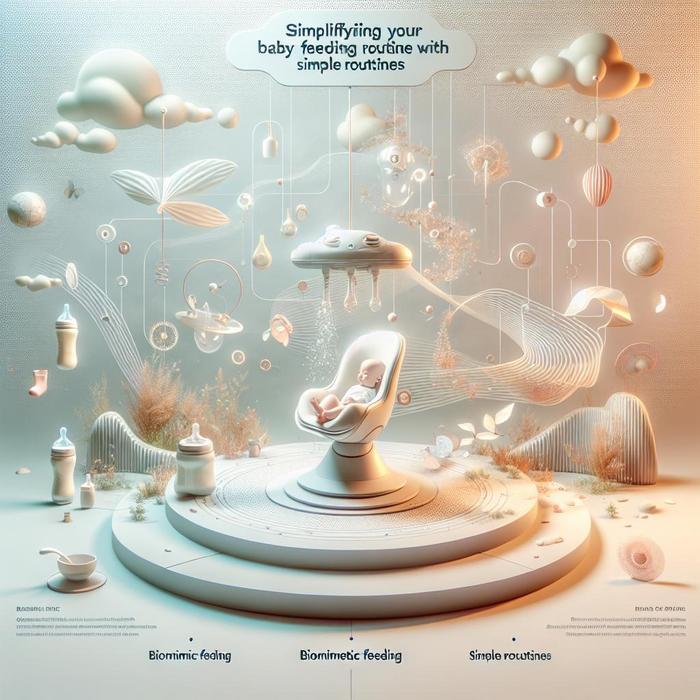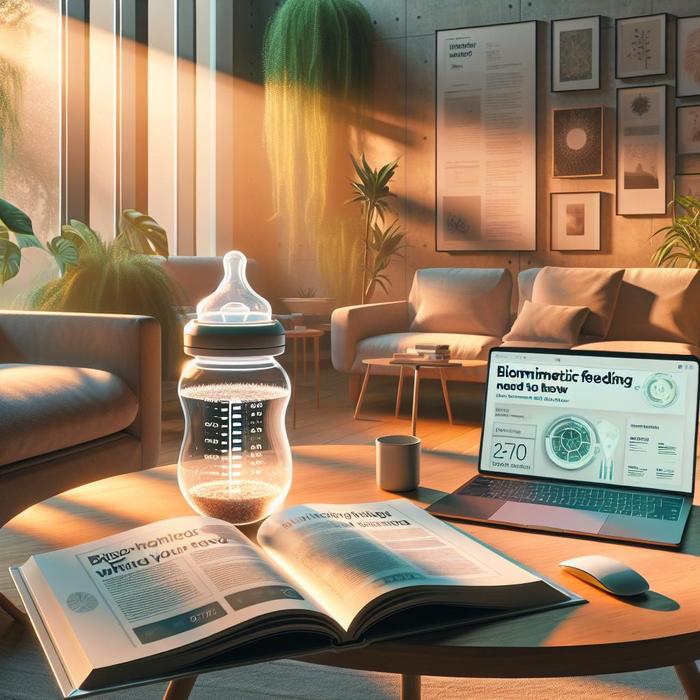Parenting Hack: Philips Avent for Easy Bedtime Feeding
Parenting can be challenging, especially during the first year. One of the most common issues faced by many newbie parents is the struggle of bedtime feeding. Thankfully, with the right tools, this task can be more manageable and less stressful. In this post, we will focus on introducing you to biomimetic feeding and how brands like Philips Avent can make your bedtime routine much smoother.
Understanding Biomimetic Feeding
Simply put, biomimetic feeding refers to the design of baby bottles that mimics the natural shape and function of a mother’s breast. This approach allows for a smoother transition from breastfeeding to bottle feeding and helps reduce common feeding problems such as nipple confusion and bottle rejection. For a more in-depth look at biomimetic feeding, check out this guide we’ve put together.
Biomimetic Brands Worth Considering for Bedtime Feeding
Not all baby bottle brands design their products with the biomimetic approach. However, some standout brands in this category include:
– Nanobébé: Their bottles are designed to preserve breast milk nutrients and offer ergonomic shapes similar to a mother’s breast.
– Comotomo: These bottles are soft, skin-like silicone that mimic breastfeeding to reduce bottle rejection and nipple confusion.
– Tommee Tippee: Their Closer to Nature bottles mimic the natural flex, stretch, and movement of a mother’s breast.
– Philips Avent: Their Natural baby bottle features wide, breast-shaped nipples to encourage a natural latch similar to the breast.
You can read more about some of these brands in our previous reviews.
Why Choose Philips Avent for Bedtime?
Even among these excellent options, Philips Avent stands out, particularly when it comes to bedtime feeding. Here’s why:
Ease of Use – Philips Avent bottles are intuitively designed for easy handling by both parents and babies. The wide bottle neck makes for effortless cleaning, an important factor when you’re exhausted at the end of the day.
Natural Latch – The unique breast-shaped nipple is not just designed for natural latch on but also allows your baby to combine bottle feeding and breastfeeding, which is ideal for mothers who want to do both.
Anti-Colic System – Philips Avent bottles utilize an innovative twin valve design to reduce colic and discomfort by venting air into the bottle and not into your baby’s tummy.
Smooth Transition – The biomimetic design of Philips Avent bottles makes the transition from breastfeeding to bottle feeding easier, minimizing the chance of your baby rejecting the bottle, which can be particularly beneficial during the fussier bedtime feeds.
Top Tips For Using Philips Avent at Bedtime
Maintain Routine – Consistency is key in establishing a successful bedtime feeding pattern. Try to feed your baby at the same time each night to help them feel secure and understand it’s time for sleep.
Proper Bottle Use – Ensure the bottle is filled to a point where the milk completely covers the inlet hole to prevent your baby from taking in air. Also remember to clean the bottles thoroughly each time to keep your baby safe.
Soothing Environment – Keep the environment calm and quiet during bedtime feeds. This will help your baby relax, making them more likely to fall asleep after feeding. A dimly lit room with a comfortable feeding chair for you can make a huge difference.
Temperature Check – Ensure the milk is at the right temperature. Philips Avent bottles are microwave safe, but it’s important to check the temperature to avoid scalding your baby’s mouth.
Remember, every baby is unique and it might take some time to figure out what works best for your little one during their bedtime feeds. Be patient with yourself as well as your baby. This journey is about learning and growing together. Stay tuned to our blog for more trends and tips on navigating this wonderful phase of life.
Transitioning to Philips Avent
It can be a challenging task for some parents to switch to bottle-feeding after having breastfed. Some babies tend to get choosy and refuse the bottle; some struggle with nipple confusion. However, Philips Avent’s biomimetic design offers a smooth transition from breastfeeding to bottle feeding (source). Remember to introduce the bottle slowly, during a time when your baby is not overtly hungry, to make this transition easier.
Try the Bottle When Baby is Calm – If your baby is agitated or too hungry, they might refuse the bottle instantly. Instead, introduce it at a time when they’re content and alert.
Involve Other Family Members – Often, babies associate their mothers with breastfeeding. So, having another family member offer the bottle can sometimes help in the initial stages.
Consistent Effort – Don’t be disheartened if your baby doesn’t accept the bottle straight away. The trick is to be consistent. Continue offering them the bottle allowing them to get used to the idea gradually.
Benefits of Using Philips Avent with Other Products
If you’ve opted for Philips Avent for bedtime feeding, consider pairing it with other products from the brand. A prime example is the Philips Avent Baby Monitor, available on Google Play Store. It offers clear sound and video quality so that you can watch over your baby during their sleep post-feeding. It even comes with a unique feature that allows you to monitor the room temperature, ensuring a comfortable environment for your child.
Reducing Dependency on Night Time Feed
As your baby grows older, it becomes crucial to gradually reduce their dependency on night-time feeds. Philips Avent can help make this transition smoother by adopting the right steps. Here’s how:
Reduce Night Time Feeds Gradually – Gradually decrease the quantity of milk your baby consumes during the night. Once they get accustomed to decreased feedings, they may start sleeping for longer durations at a stretch.
Introduce Solid Foods – As your baby grows older, introduce solid food into their diet, to help them stay full for longer periods.
Change Their Sleep Association – If your baby associates sleep with being fed, try to change this association gradually. You can gradually change their sleep association by introducing bedtime rituals like a bath or storytelling. Philips Avent can help in this process, as it mimics the natural feeding pattern, causing less distress to the baby during this transition (source).
How Philips Avent Supports Sustainable Parenting
Philips Avent recognizes the significance of sustainable baby care products. All their baby bottles are free from harmful substances, such as BPA, and are made from recyclable, high-quality material. By choosing Philips Avent, you’re not just providing optimal care to your baby, but you’re also contributing to a healthier planet.
The Takeaway
In essence, Philips Avent’s comprehensive approach to mimicking natural breastfeeding patterns helps eliminate bottle rejection. With my personal experience of using Philips Avent for bedtime feeding, I can vouch for its effectiveness. It combines ease of use, adaptability, and function, embodying the true essence of biomimetic design. Stay tuned to the blog for even more insights and personal anecdotes on parenting and feeding struggles. You’re not alone in this journey of parenthood, and we’re here to guide and support you.






